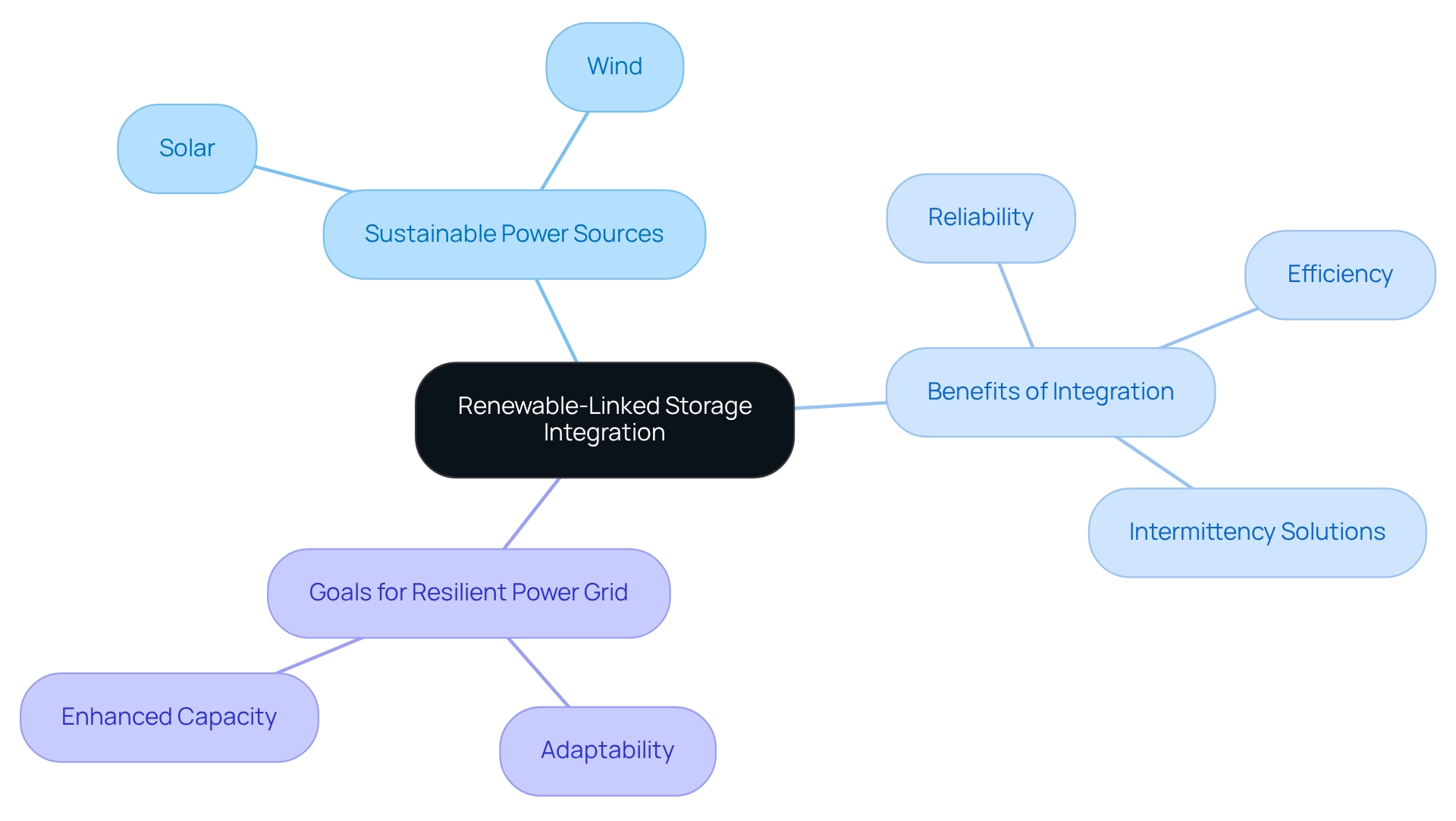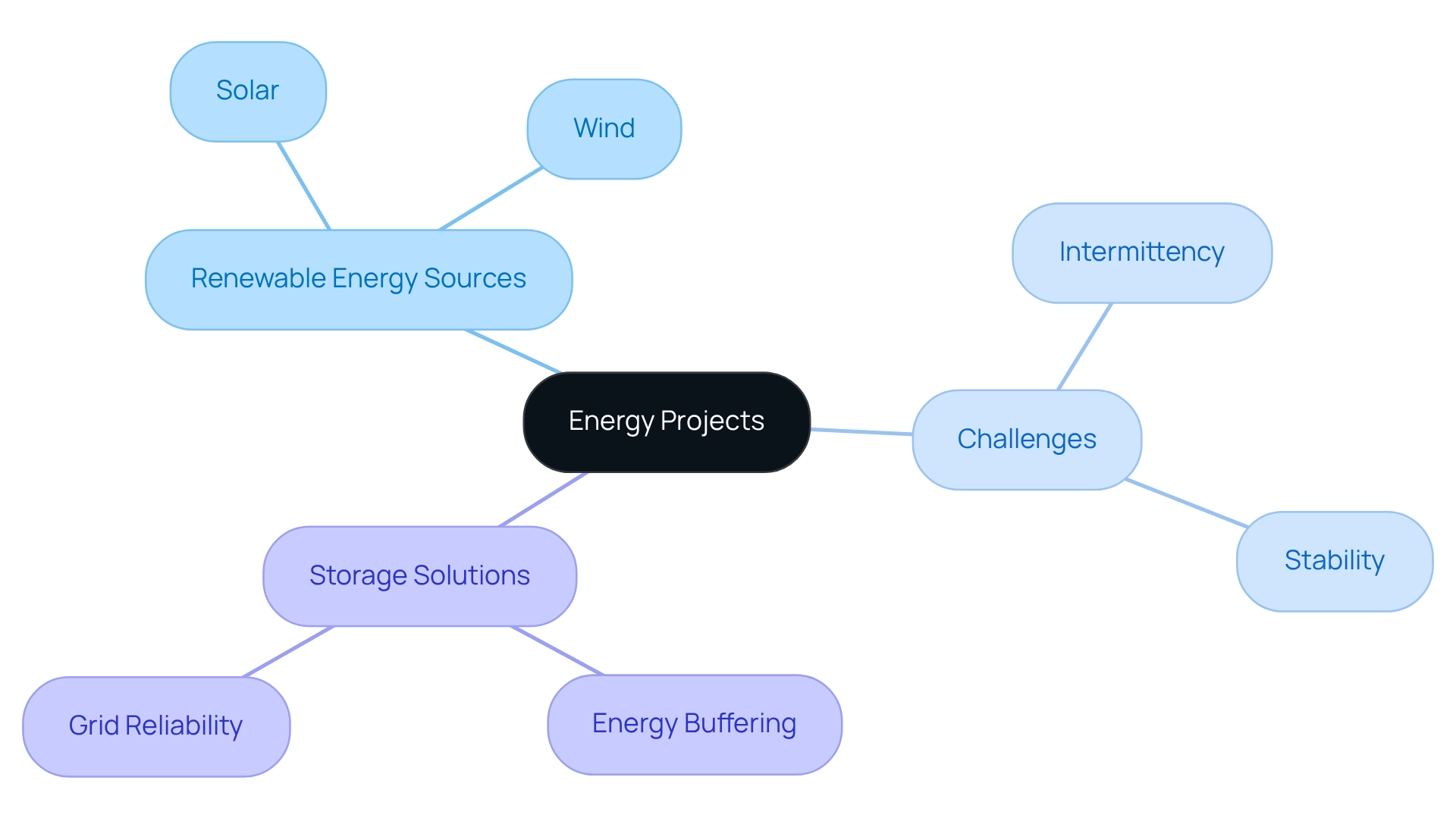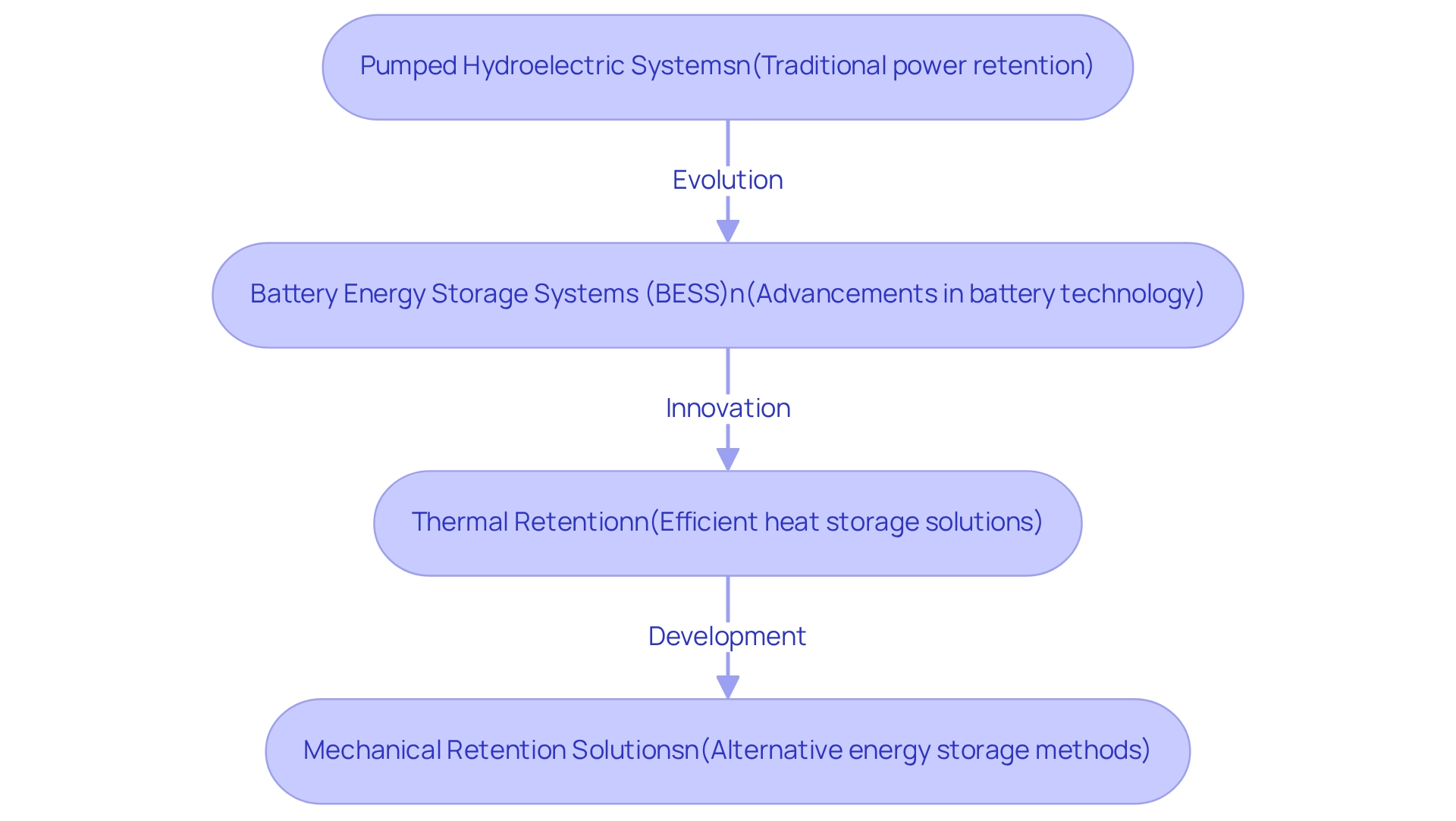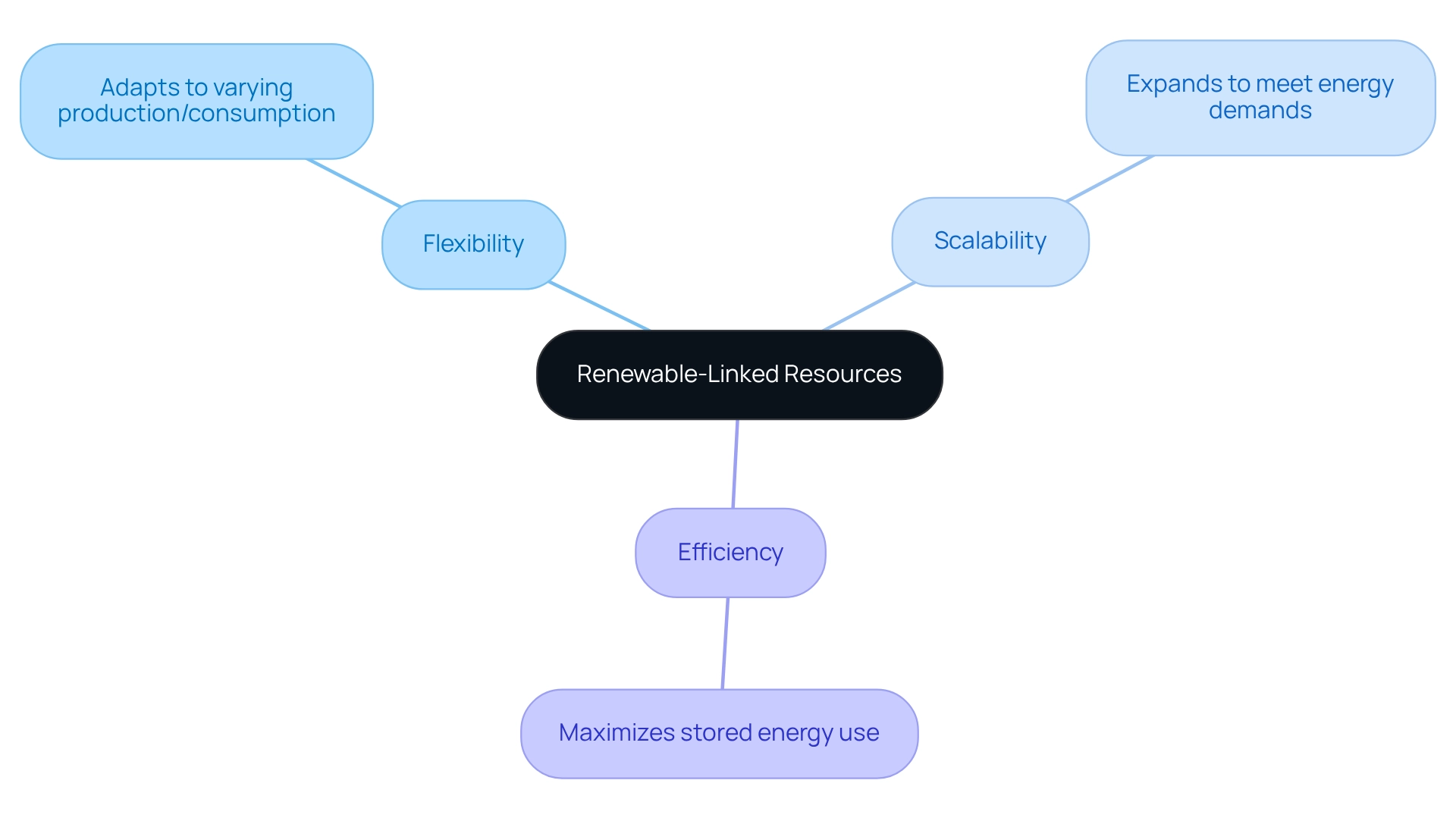Overview
The article emphasizes the critical role of renewable-linked storage integration in enhancing the reliability and efficiency of energy projects. As nations shift towards sustainable energy sources such as solar and wind, the integration of storage solutions becomes paramount. This approach effectively addresses the intermittency associated with renewable energy, thereby stabilizing power supply and fostering a more resilient energy grid. Such a grid is essential for achieving a sustainable future.
Introduction
As the world transitions to sustainable energy solutions, the integration of renewable energy sources with storage systems stands as a crucial strategy for enhancing energy reliability and efficiency. This innovative approach captures excess energy generated from sources such as solar and wind during peak production times, allowing for storage and utilization when demand surges or generation dips. By addressing the inherent intermittency of renewable energy, this integration not only fortifies the energy grid but also bolsters global efforts to reduce carbon emissions and achieve energy independence. The evolution of this technology, characterized by advancements in battery systems and energy management, lays the groundwork for a more resilient and flexible energy future. This makes it a focal point for policymakers and industry leaders alike.
Define Renewable-Linked Storage Integration
The integration of sustainable power sources, such as solar and wind, with renewable-linked storage integration is essential for enhancing the reliability and efficiency of energy supply. This strategic combination enables renewable-linked storage integration, allowing for the collection and storage of excess power generated during peak production periods for utilization during times of low generation or heightened demand.
The primary goal is to establish a more resilient and adaptable power grid capable of accommodating the variable nature of sustainable energy production. This unification is vital for advancing towards a sustainable energy future, as renewable-linked storage integration effectively addresses the intermittency challenges associated with alternative energy sources.

Context and Importance in Energy Projects
The integration of sustainable power with renewable-linked storage integration is increasingly vital in power generation projects, driven by a growing reliance on alternative sources to meet global energy demands. As countries strive to reduce carbon emissions and shift away from fossil fuels, renewable resources such as solar and wind are gaining traction. However, these sources are inherently intermittent, posing significant challenges to maintaining a stable power supply. The incorporation of renewable-linked storage integration effectively addresses these challenges by providing a buffer that allows energy to be stored when production exceeds demand and released when necessary. This capability not only bolsters grid reliability but also supports broader goals of energy independence and sustainability. Consequently, it has become a focal point for both policymakers and project developers.
In light of these developments, it is essential to consider how these storage solutions can transform the energy landscape, ensuring a more reliable and sustainable future.

Historical Development and Technological Advancements
The historical progression of renewable-linked storage integration marks a significant evolution in energy management. Initially, power retention was limited to pumped hydroelectric systems, which have served for decades to balance supply and demand. However, the transformation brought about by advancements in battery technology, particularly lithium-ion batteries, has been remarkable.
Over the past twenty years, substantial investments in research and development have led to the emergence of various retention technologies, including:
- Battery energy storage systems (BESS)
- Thermal retention
- Mechanical retention solutions
These innovations facilitate the efficient and scalable incorporation of sustainable power sources into the grid through renewable-linked storage integration, paving the way for a low-carbon power future. As technology continues to advance, the potential for innovative solutions to enhance renewable resource integration remains a critical focus for researchers and industry experts.

Key Characteristics and Components
The integration of renewable-linked resources is characterized by key attributes: flexibility, scalability, and efficiency. Flexibility is crucial as it allows power systems to adapt to varying production and consumption patterns. Scalability ensures that solutions can be expanded to meet growing energy demands. Efficiency plays a vital role in maximizing the use of stored energy while minimizing losses during conversion and discharge processes.
Typically, these systems comprise renewable power generation units—such as solar panels and wind turbines—power retention devices like batteries or pumped hydro systems, and advanced control systems that manage the flow of energy between generation, storage, and consumption. Together, these components forge a cohesive system that not only enhances the reliability of energy supply but also promotes sustainability. Consequently, renewable-linked storage integration serves as a cornerstone of modern energy infrastructure, providing innovative solutions to address the pressing challenges of energy demands.

Conclusion
The integration of renewable energy sources with storage systems stands as a pivotal strategy for achieving a sustainable energy future. By effectively capturing and storing excess energy generated during peak production times, this integration addresses the inherent intermittency of renewable sources such as solar and wind. This not only enhances the reliability of the energy grid but also plays a crucial role in reducing carbon emissions and promoting energy independence.
As the demand for renewable energy grows, so does the importance of innovative storage technologies. Historical advancements, particularly in battery technology, have transformed energy storage capabilities, enabling a more efficient and scalable integration into the grid. With key characteristics such as flexibility, scalability, and efficiency, renewable-linked storage systems are designed to adapt to the dynamic nature of energy production and consumption, ensuring a stable and sustainable energy supply.
In conclusion, the combined efforts of policymakers, researchers, and industry leaders in advancing renewable-linked storage integration will be essential for overcoming the challenges posed by intermittent energy generation. As this field continues to evolve, it lays the groundwork for a more resilient energy infrastructure, ultimately contributing to a cleaner and more sustainable future for all. Embracing these technologies is not just beneficial; it is imperative for the transition to a low-carbon energy landscape.
Frequently Asked Questions
Why is the integration of sustainable power sources important?
The integration of sustainable power sources, such as solar and wind, with renewable-linked storage is essential for enhancing the reliability and efficiency of energy supply.
What is renewable-linked storage integration?
Renewable-linked storage integration allows for the collection and storage of excess power generated during peak production periods for use during times of low generation or high demand.
What is the primary goal of integrating renewable-linked storage?
The primary goal is to establish a more resilient and adaptable power grid that can accommodate the variable nature of sustainable energy production.
How does renewable-linked storage integration contribute to a sustainable energy future?
It effectively addresses the intermittency challenges associated with alternative energy sources, making it vital for advancing towards a sustainable energy future.




